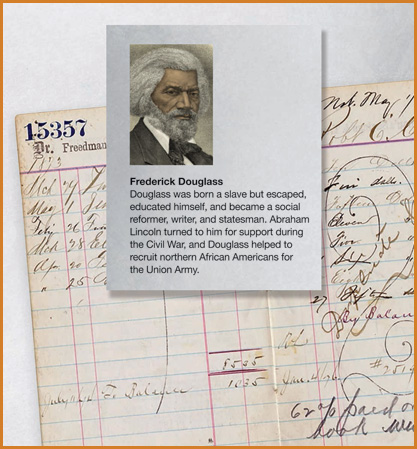“Married to a Corpse” – The Bank’s Demise
In 1867, the Freedman’s Bank moved its headquarters from New York City to Washington, D.C. Soon after, a group of local bankers, politicians and businessmen began to take control. At the urging of the new trustees, Congress amended the bank’s charter. The trustees now began to invest in real estate projects and railroads, and they made risky loans to friends, some with no collateral. Some of the trustees were in charge of other banks, as well, and when they made bad loans at those banks, they transferred the bad loans to the Freedman’s Bank. As Frederick Douglass, a famous writer and speaker, widely respected in the African American community, would later describe it, the bank had become “the black man’s cow but the white man’s milk.”
When a financial panic hit the country in 1873, most of the Freedman’s Bank’s investments lost value or became worthless. The bank was doomed. Several branches were hit by bank runs, during which crowds of depositors demanded their money. The branches met demands but the cash reserves of the Freedman’s Bank were drained. A number of trustees resigned.
In the meantime, no one had been watching what the trustees were doing. The U.S. Congress was supposed to supervise the Freedman’s Bank, but paid little attention. When Congress finally sent the Comptroller of the Currency to look carefully at the bank’s books, it was too late. In an attempt to save the bank, the trustees asked Frederick Douglass to replace bank president, John Alvord. He accepted the position, not knowing how bad the situation was. He soon realized he was “married to a corpse.”
Six weeks after taking the job, he told Congress to shut the bank down. The trustees fought the closing at first, but they soon realized that the bank could not be saved. In June 1874, the Freedman’s Bank was closed.
Next: The Lasting Impact of Freedman's Bank

